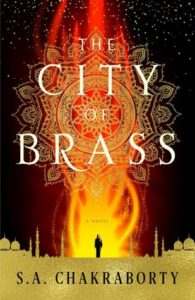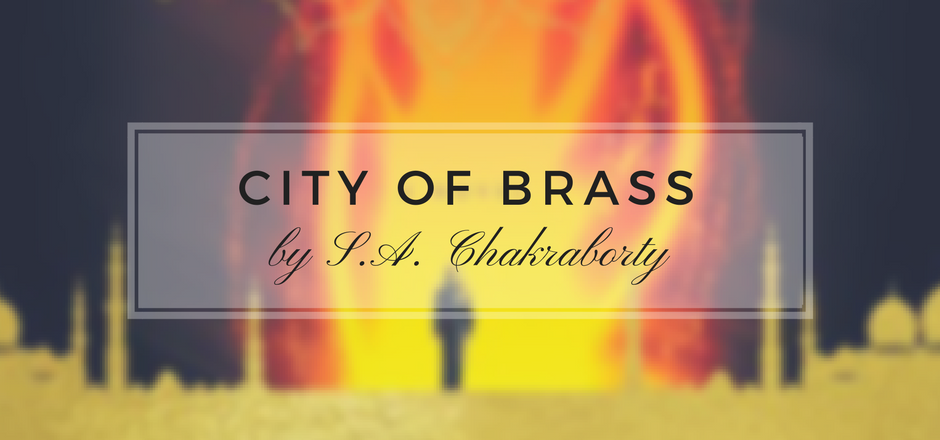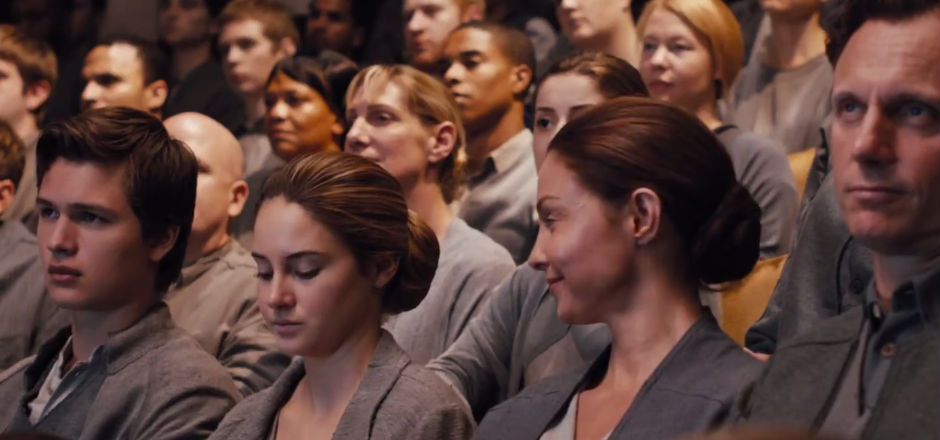Nahri has talents that definitely don’t qualify as normal: she sees sickness and disease inside others and sometimes she can stop it from spreading — or heal it altogether. But that doesn’t always lead to good things for kids in the slums of 18th century Cairo. Nahri has spent her life using her abilities to scrape by and ended up as a con artist, but one of her cons goes horribly wrong, and she accidentally summons a djinn who takes her to the mist-veiled city of Daevabad, a city of magic ruled by djinn who will change Nahri’s life forever.
 I first heard about City of Brass around the time it was acquired, when it was initially announced as Daevabad, and have been eagerly anticipating the title ever since. Stories about djinn have always fascinated me (you can tell by two of the book club reads I picked this year) and knew as soon as I heard about this one that I needed it in my hands.
I first heard about City of Brass around the time it was acquired, when it was initially announced as Daevabad, and have been eagerly anticipating the title ever since. Stories about djinn have always fascinated me (you can tell by two of the book club reads I picked this year) and knew as soon as I heard about this one that I needed it in my hands.
The City of Brass wasn’t quite what I expected from those initial announcements. I knew it was set in 18th century Cairo; I did not know that its core narrator would be a bit of an upstart street rat who doesn’t believe in magic.
Consider me enchanted, because I couldn’t stop reading this book.
(I mean that in the most literal sense: I started reading it, convinced I would read for 2 hours and get some other work done, and that… did not happen.)
Nahri, the protagonist of the novel, might have supernatural abilities to notice and diagnose sickness and sometimes to heal it, but despite very clear evidence that magic is real, she’s adamant that djinn and demons are simply things made up to keep people in line. She’s street-smart, blasphemous, clever — and the only thing she wants in life is to study proper medicine and become a physician.
Chakraborty does an excellent job with the historical aspects of City of Brass. At the very beginning of the story, she sets the scene in Cairo as a city caught in the war between the French and the Ottomans. It’s crafted in such a way that readers who aren’t familiar with Egypt during that era won’t feel lost, but it’s also filled with rich detail that’s not only physical — the smells, the food, the textures — but also cultural: the family constructs and educational style of the era are presented subtly in ways readers may not realize they’re being educated.
By the time Nahri and the djinn, Dara, end up in Daevabad, an additional layer of rich detail has been added: the systems of djinn and supernatural society, from how djinn measure up against one another to how the djinn fit into the big picture of supernatural creatures. Daevabad itself is actually rarely shown: Nahri is more or less confined in one complex of buildings, and she even complains that she rarely sees the rest of the city.
A second perspective character is Ali, a mixed prince of Daevabad who has distinctly different perspectives on nearly everything. Ali and Nahri’s interactions are fascinating, because despite their differences, they have very similar interests: they’re both secret book nerds fascinated with economics.
Despite what I personally find a vaguely annoying and unnecessary romance, City of Brass is gorgeous and next to impossible to put down. The story is extremely fast-paced, so much so that if I say much more about what actually happens in the book, this review will have way more spoilers than it already has. I’d recommend this to anyone looking for fresh worldbuilding in fantasy and an exciting story that doesn’t rely on fighting and gore to be exciting and fun.
4.5 out of 5 stars
This review contains affiliate links. While Girls in Capes does make revenue from purchases made at affiliate links, reviews are not paid, and all reviews contain the staff writers’ honest opinions of the work.






